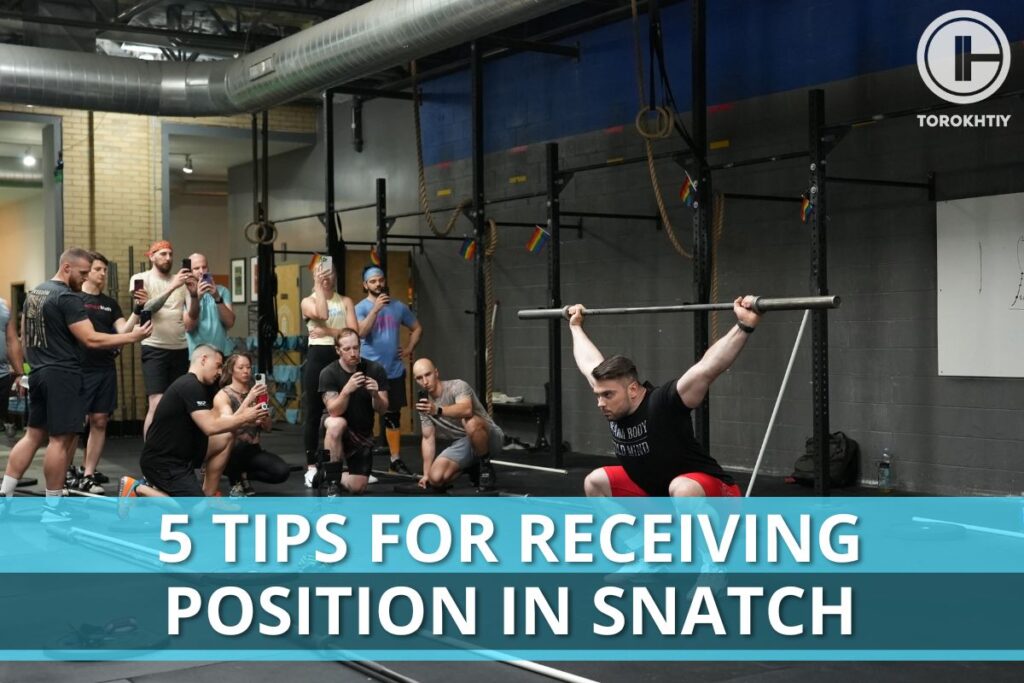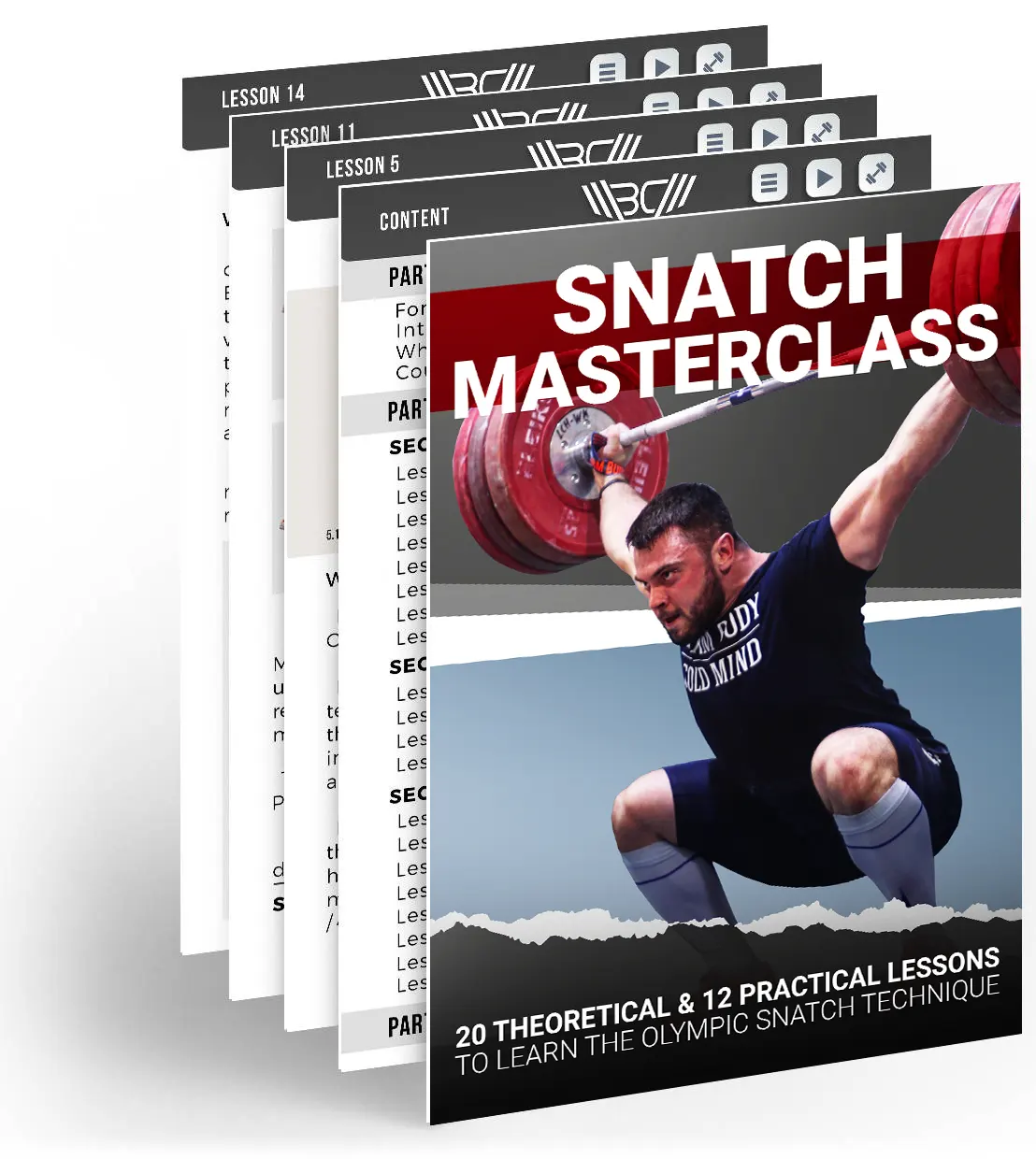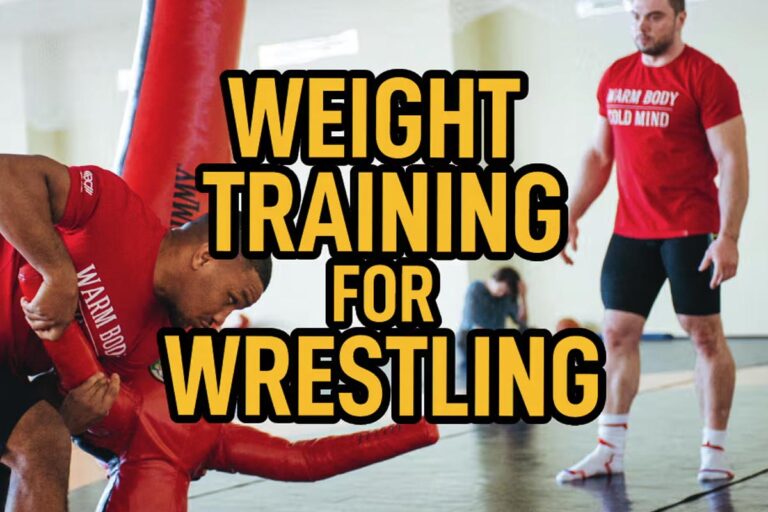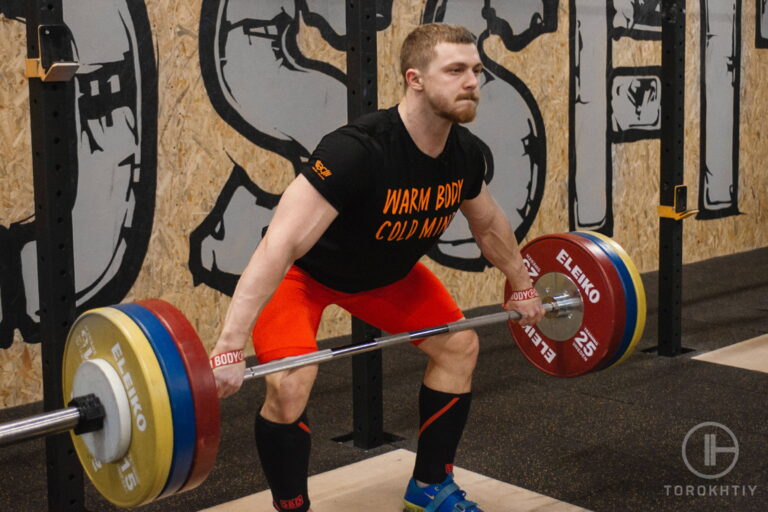5 Tips for Receiving Position in Snatch
1. Receiving position should be really low – this is a really low squat with the barbell over your head, the back surface of the thigh touching the calf muscle. It should be remembered that even the smallest lack of squat depth in receiving position will lead to an unrealized result in the snatch.

Because the whole point of the movement is to create the maximum height of the barbell’s reach and at the same time take the lowest possible position in the squat, as quickly as possible.
2. Stability – you need to understand that holding an extreme, and even beyond extreme weight over your head is difficult not only for beginners, but also for professional athletes. For professional athletes especially, since for them the weight is heavier. Therefore, the ability to cope with their fears distinguishes a professional athlete from a beginner.
3. Awareness and control – low squat is a difficult enough position and in order to do it automatically, it can take 2-3 years for each lift to consciously control the position of the feet, back and arms. And even if you have excellent joint mobility, be prepared that it may take a considerable amount of time before this position begins to work out on its own.
4. Mobility and balance – precisely those skills that will help you keep the ultimate weight above your head when the barbell is pressing down on you. Yes, strength is important, but lack of balance will keep you from finding the perfect position for both your body and barbell, and lack of mobility can turn your power against you.
🔻THE OLYMPIC SNATCH MASTERCLASS
🏋️ Elevate Your Snatch Game with the Snatch Masterclass! 🚀
Master the Olympic Snatch in easy steps:
- 🧠 20 In-Depth Lessons
- 💪12 Hands-On Practice Sessions
- 📽️ 55 Video Tutorials
- 🔥28 Exclusive Snatch Tips
Unleash Your Potential:
- 🔓 Lifetime Access
- 🏆 Bonus: 3-week Snatch Program
Don’t just lift; dominate the Snatch! Join now! 🥇🔥
5. Habit – as I already mentioned earlier, in order to work out a difficult form in total, it is necessary to work on single elements for a fairly long time. The habit of sitting in squats for 2-5 seconds, regardless of the weight of the barbell, should be formed during the initial training and remain with the highly qualified athlete.
It should be remembered that you can always get out of the squat instantly, but if you aren’t accustomed to sitting to keep the barbell over your head, then you will have no lift.
Why Trust Us?
With over 20 years in Olympic Weightlifting, our team does its best to provide the audience with ultimate support and meet the needs and requirements of advanced athletes and professional lifters, as well as people who strive to open new opportunities and develop their physical capabilities with us.
By trusting the recommendations of our certified experts in coaching, nutrition, dietology, and sports training programming, as well as scientific consultants, and physiotherapists, we provide you with thorough, well-considered, and scientifically proven content. All the information given in the articles concerning workout programming, separate exercises, and athletic performance, in general, is based on verified data. We ensure that you can rely on our professionals’ pieces of advice and recommendations that can be treated as personalized ones which will benefit you and fully meet your needs.
The product testing process is described in more detail here
Author: Sergii Putsov
Head of Sport Science, PhD
Best Results: Snatch – 165 kg,
C&J – 200 kg
Sergii Putsov, Ph.D., is a former professional weightlifter and National team member, achieving multiple medals in the 94 kg weight category at national competitions. With a Master’s degree in “Olympic & Professional Sport Training” and a Sport Science Ph.D. from the International Olympic Academy, Greece, Sergii now leads as the Head of Sport Science. He specializes in designing training programs, writing insightful blog articles, providing live commentary at international weightlifting events, and conducting educational seminars worldwide alongside Olympic weightlifting expert Oleksiy Torokhtiy.








